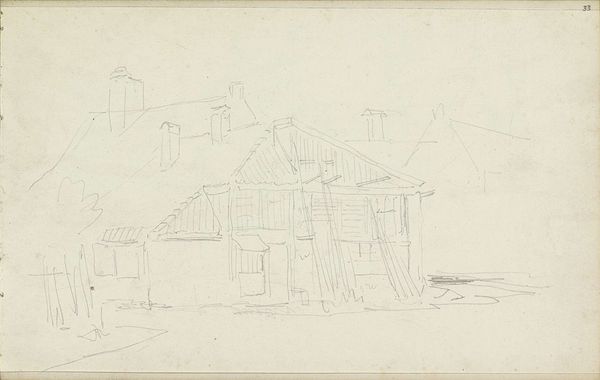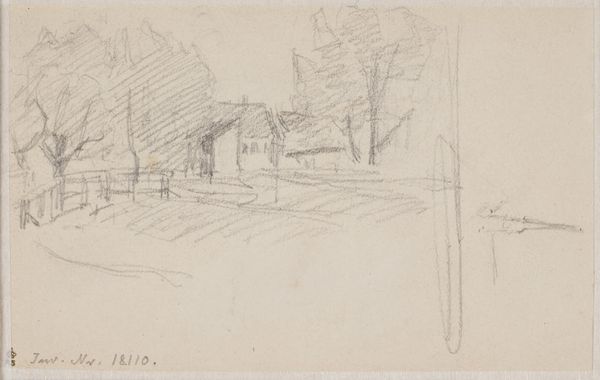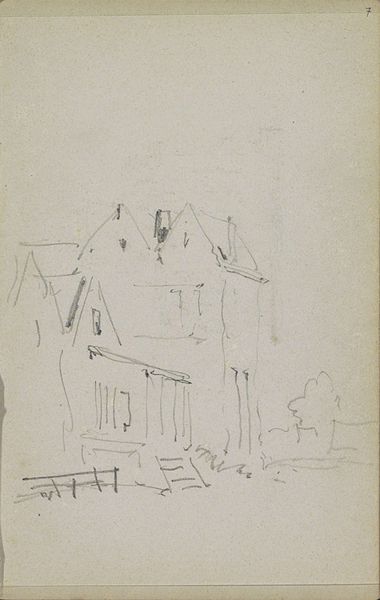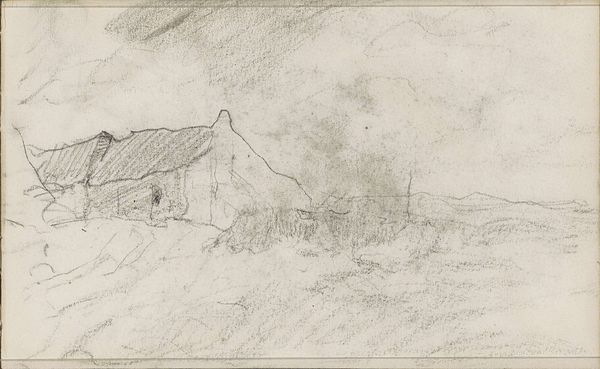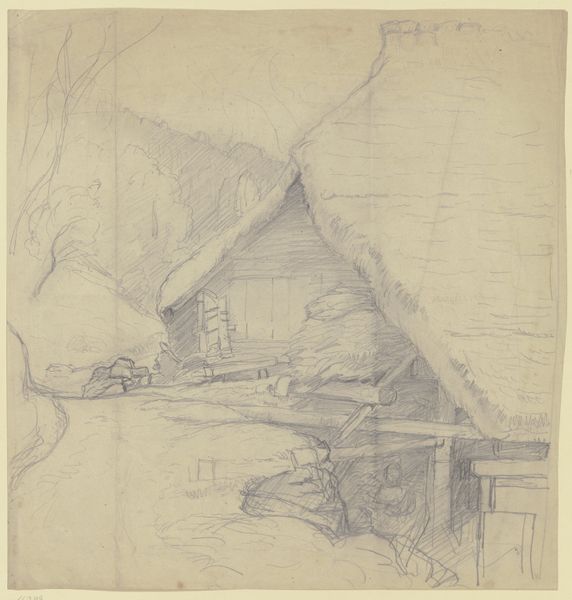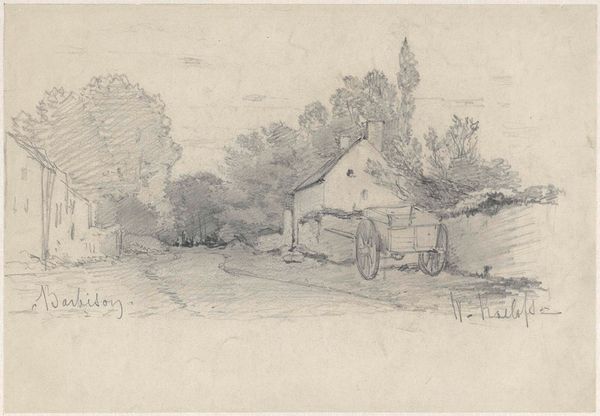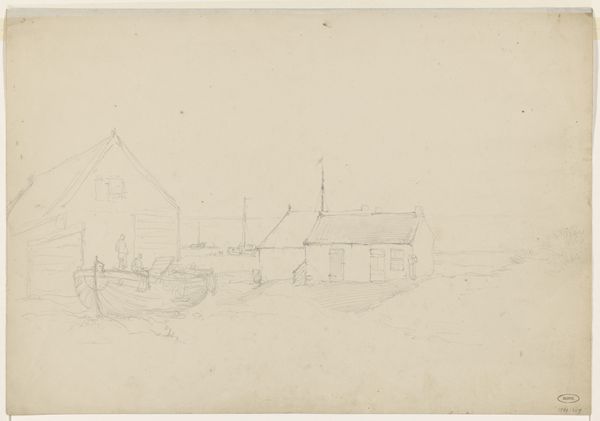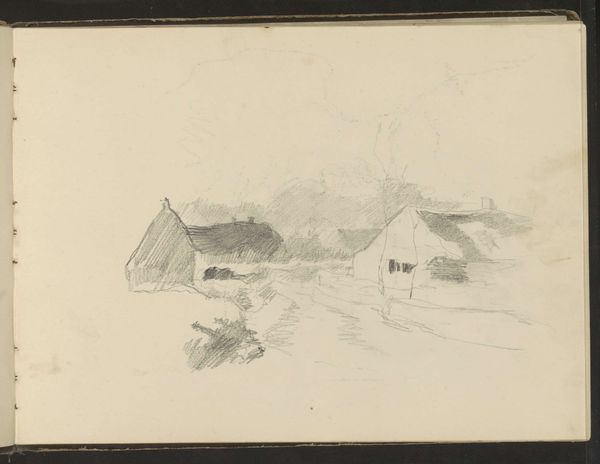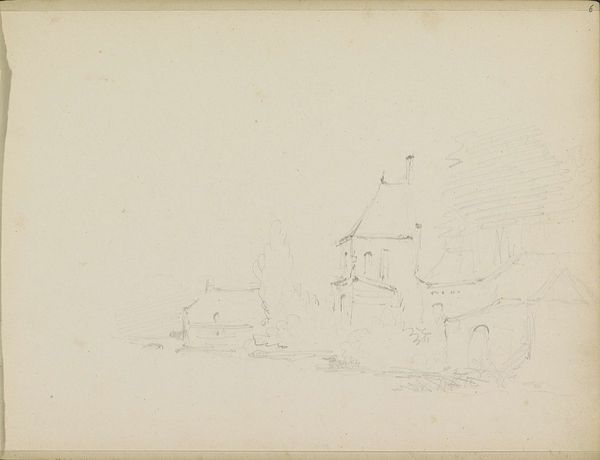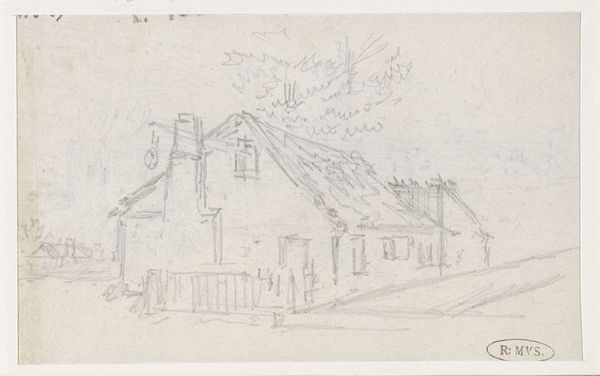
drawing, pencil
#
drawing
#
amateur sketch
#
light pencil work
#
pencil sketch
#
incomplete sketchy
#
landscape
#
personal sketchbook
#
sketchwork
#
pen-ink sketch
#
pencil
#
sketchbook drawing
#
sketchbook art
#
realism
#
initial sketch
Dimensions: height 115 mm, width 172 mm
Copyright: Rijks Museum: Open Domain
Editor: This is "Sketch of a Farm in Zoelmond, in the Betuwe," a pencil drawing by Evert Doublet, sometime between 1812 and 1859. It’s so simple, almost… fragile. The pencil strokes are barely there. What catches your eye about this sketch? Curator: It's interesting to see how Doublet has approached the representation of labor and land in this rural scene. The quick strokes, the unfinished quality, point to the material constraints of artistic production itself. Consider the accessibility of pencil versus more expensive paints. How does this impact who gets to depict the landscape and how? Editor: That’s a good point. So, the very choice of materials says something about the artist's position? Curator: Precisely! The pencil allows for immediacy, a sketching out of ideas perhaps tied to land ownership, agricultural practices or even personal connection with natural resources. Note the workers rendered simply as lines. Are they defined, or merely elements OF the land they occupy? Are their houses extensions of them? Consider what is represented in more detail and what fades into background. What does it tell you about its intended audience or purpose? Is this sketch intended to convey material ownership of land, celebrate labor, or more probably...both? Editor: So, the drawing isn’t just *of* a farm; it’s also about the economics and labor that sustain it, and the artist's position in relation to that. I’ll definitely look at sketches differently now! Curator: Exactly! By focusing on the materials and means of production, we uncover the hidden social and economic relationships embedded within the artwork. We understand that art, whether “high” or a simple sketch, is part of material and cultural systems, and never independent of them. Editor: Thanks, that’s really opened my eyes to the significance of even the humblest of materials.
Comments
No comments
Be the first to comment and join the conversation on the ultimate creative platform.
